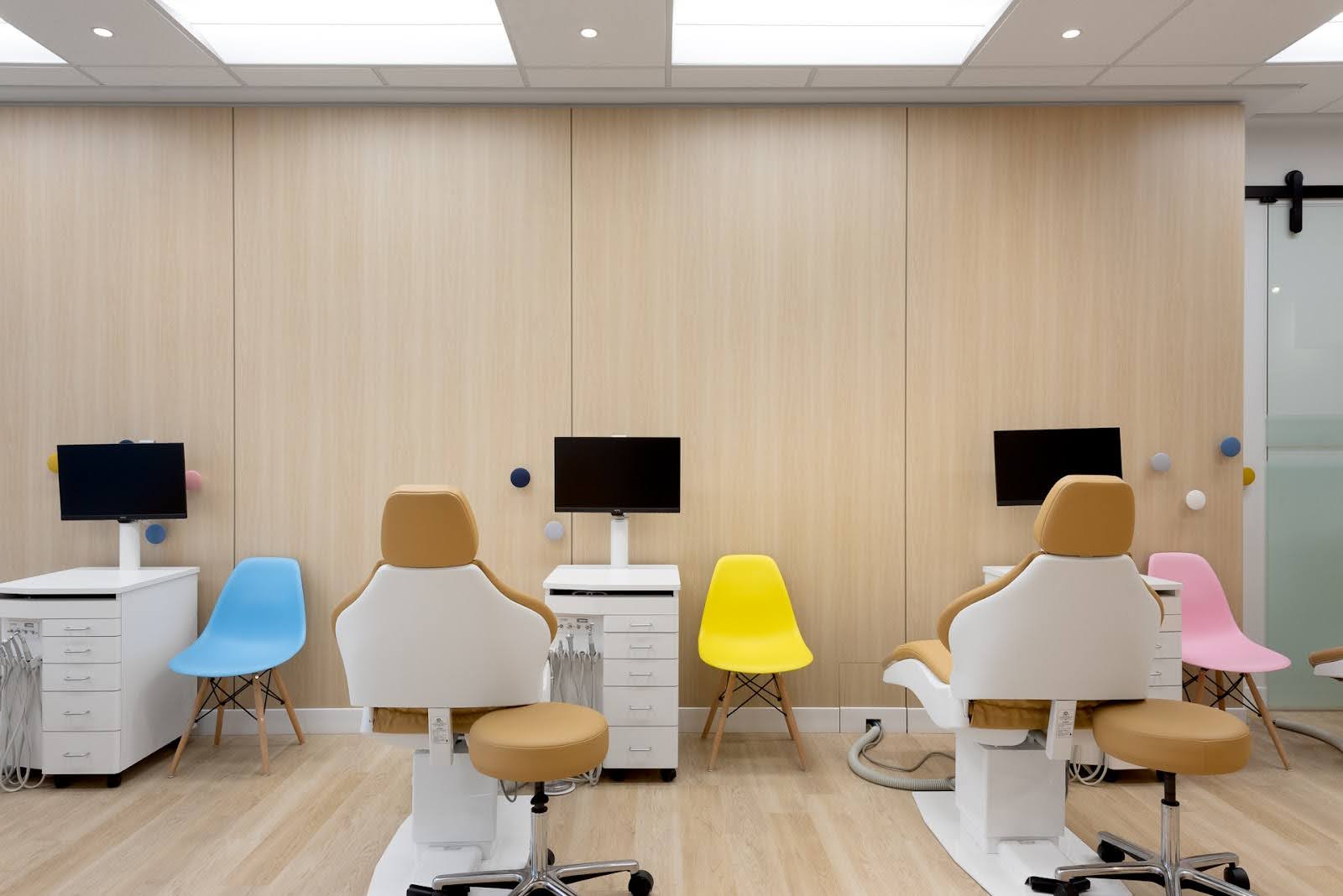How to Get Straight Teeth Without Braces: Explore Your Options
April 2, 2025
How to Get Straight Teeth Without Braces: Explore Your Options
Getting straight teeth doesn’t always mean you need braces. There are other ways to achieve a confident smile that might better fit your lifestyle. At Glow Orthodontics, Dr. Irene Hyunsoo Cho and her team focus on giving you personalized care, whether you’re interested in Invisalign, retainers, or other orthodontic solutions. Let’s explore some of the options that can help you get the smile you’ve always wanted.
Key Takeaways
- Invisalign is a discreet and flexible way to straighten teeth without braces, making it a popular choice for many people.
- Retainers can help maintain or even improve teeth alignment, but they require consistent care and use.
- Orthodontic consultations are important to figure out the best treatment option for your specific needs and goals.
Understanding Invisalign for Teeth Straightening

How Invisalign Works to Align Teeth
Invisalign uses a series of custom-made, clear plastic aligners to gradually shift teeth into their proper position. These aligners are designed specifically for your teeth, ensuring a snug and comfortable fit. You’ll wear each set of aligners for about two weeks before switching to the next set in the series. Over time, this step-by-step process moves teeth into alignment without the need for traditional braces. Many patients love that Invisalign is nearly invisible, making it a discreet option for straightening teeth.
Benefits of Choosing Invisalign Over Traditional Braces
There are several reasons why people choose Invisalign over metal braces:
- They’re clear and hard to notice, which is great for adults and teens who want a subtle option.
- You can remove them for eating, brushing, and flossing, meaning no food restrictions or complicated cleaning routines.
- They’re more comfortable since there are no wires or brackets to irritate your mouth.
For those considering Invisalign, Glow Orthodontics offers tailored Invisalign treatments for all ages, ensuring a personalized and smooth experience.
Who Is a Good Candidate for Invisalign
Not everyone is a perfect fit for Invisalign, but it works well for many common alignment issues like crowded teeth, gaps, and mild to moderate bite problems. However, severe cases may still require traditional braces or other orthodontic solutions. It’s important to consult with an orthodontist to determine if Invisalign is right for you. Clinics like Glow’s Langley Orthodontist Clinic provide expert evaluations to help you make the best choice for your smile.
Caring for Your Invisalign Aligners
Keeping your aligners clean is crucial for both your oral health and the effectiveness of the treatment. Here are some tips:
- Rinse your aligners every time you remove them to prevent saliva and plaque buildup.
- Brush them gently with a soft toothbrush and clear, unscented soap—avoid toothpaste as it can scratch the plastic.
- Store them in their protective case when not in use to avoid damage or loss.
By following these steps, you can ensure your aligners stay in good condition throughout your treatment. Many orthodontic clinics offer guidance on aligner care to help you maintain your progress.
The Role of Retainers in Achieving Straight Teeth

How Retainers Help Maintain Alignment
Retainers are a key part of keeping your teeth straight after orthodontic treatment. They work by holding your teeth in their new positions while your gums and bones adjust. Without them, your teeth can gradually shift back to their original places. Retainers essentially act as a safeguard for the time and effort spent on straightening your teeth.
Different Types of Retainers Explained
There are several types of retainers, each serving the same purpose but in slightly different ways:
- Fixed retainers: These are thin wires bonded to the back of your teeth. They stay in place and don’t require daily removal.
- Removable retainers: These can be taken out and are typically made of plastic and wire or clear materials.
- Hawley retainers: A traditional option with a combination of acrylic and metal wiring.
- Clear retainers: These resemble Invisalign aligners and are less noticeable.
Your orthodontist will recommend the best type for your needs, depending on your treatment and lifestyle.
When to Use Retainers for Teeth Straightening
Retainers are most commonly used after braces or clear aligners. However, in some cases, they can also be employed to make minor adjustments to alignment. Typically, you’ll need to wear them full-time initially, then transition to nighttime use. Consistency is vital—skipping days can lead to unwanted movement.
Tips for Proper Retainer Care
Taking care of your retainer is just as important as wearing it. Here are some tips to keep it in good condition:
- Clean your retainer daily using a soft toothbrush and mild soap or a special retainer cleaner.
- Avoid exposing it to heat, like hot water or direct sunlight, as this can warp the material.
- Store it in its case when not in use to prevent damage or loss.
- Regularly check for signs of wear and visit your orthodontist if repairs or replacements are needed.
By following these guidelines, you can ensure your retainer stays effective and your teeth remain beautifully aligned.
Exploring the Benefits of Orthodontic Consultations

Why Professional Guidance Is Essential
When it comes to straightening your teeth, seeking advice from an orthodontist can make all the difference. Orthodontists are trained to assess your specific dental needs and recommend the most effective treatment options. Whether you’re considering Invisalign, retainers, or another method, their expertise ensures you’re on the right path to a healthier smile. Plus, professional guidance can help you avoid wasting time and money on solutions that may not work for your unique situation.
What to Expect During an Orthodontic Consultation
Your first orthodontic consultation is typically straightforward and informative. Here’s what usually happens:
- Initial Exam: The orthodontist will examine your teeth, jaw, and bite to identify any alignment issues.
- Diagnostic Records: They might take X-rays, photos, or impressions to get a detailed picture of your dental structure.
- Treatment Discussion: You’ll discuss potential treatment options, timelines, and costs to find a plan that fits your needs.
At Glow Orthodontics, consultations include personalized treatment plans and even financing options, making it easier to get started.
Questions to Ask Your Orthodontist
Don’t hesitate to ask questions during your consultation. Here are a few to consider:
- What treatment options are available for my specific case?
- How long will the treatment take?
- Are there any lifestyle changes I need to make during the process?
- What are the costs, and do you offer payment plans?
Being prepared with questions ensures you leave the appointment with all the information you need to make a confident decision.
How to Choose the Right Orthodontic Provider
Selecting the right orthodontist is a big decision. Look for someone who:
- Has a solid reputation and positive patient reviews.
- Offers a variety of treatment options, like Invisalign and traditional braces.
- Provides transparent pricing and flexible payment plans.
Glow Orthodontics not only specializes in orthodontic care but also offers helpful resources to guide you through the process. Whether it’s your first consultation or follow-up visits, having a trusted provider makes all the difference.
Wrapping It Up
Getting straight teeth without braces is totally possible, and there are a few solid options to think about. Whether you’re considering Invisalign or retainers, the key is finding what works best for you and your lifestyle. At Glow Orthodontics, Dr. Irene Hyunsoo Cho and her team are all about helping you get that healthy, glowing smile in a way that feels right for you. If you’re ready to explore your options, they’re there to guide you every step of the way. So, why wait? Your perfect smile might be closer than you think.